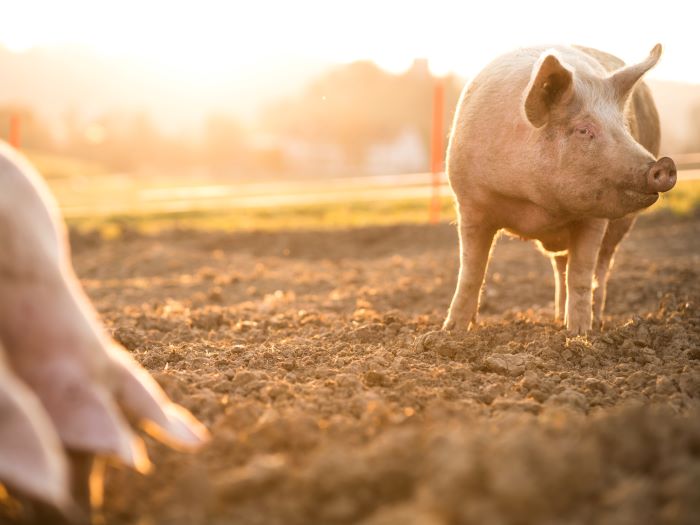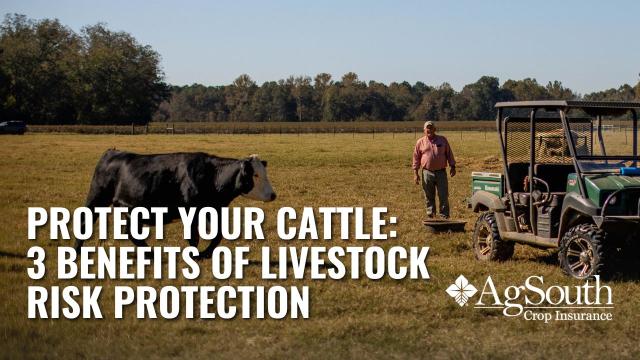Recognizing Animals Threat Defense (LRP) Insurance Policy: A Comprehensive Guide
Browsing the realm of animals danger protection (LRP) insurance policy can be an intricate endeavor for several in the agricultural field. This kind of insurance coverage offers a safeguard against market fluctuations and unanticipated situations that can affect animals producers. By recognizing the ins and outs of LRP insurance coverage, manufacturers can make educated choices that might safeguard their operations from economic dangers. From how LRP insurance coverage operates to the various protection choices available, there is much to discover in this thorough guide that might potentially form the way animals producers come close to threat monitoring in their organizations.

Just How LRP Insurance Coverage Works
Occasionally, recognizing the mechanics of Livestock Threat Protection (LRP) insurance policy can be complex, but damaging down just how it functions can supply clarity for farmers and breeders. LRP insurance is a danger management device created to safeguard livestock producers against unexpected price decreases. It's important to keep in mind that LRP insurance is not an income warranty; instead, it focuses solely on price threat security.
Qualification and Coverage Options

When it pertains to coverage choices, LRP insurance uses manufacturers the flexibility to choose the insurance coverage degree, coverage period, and endorsements that best match their threat monitoring needs. Protection levels usually vary from 70% to 100% of the anticipated ending value of the insured livestock. Producers can additionally pick insurance coverage periods that line up with their manufacturing cycle, whether they are guaranteeing feeder livestock, fed livestock, swine, or lamb. Endorsements such as rate risk defense can better customize protection to protect versus adverse market changes. By recognizing the qualification requirements and protection choices readily available, livestock producers can make educated decisions to manage threat properly.
Advantages And Disadvantages of LRP Insurance Policy
When examining Animals Danger Security (LRP) insurance, it is crucial for livestock manufacturers to consider the advantages and drawbacks fundamental in this risk monitoring device.

One of the primary advantages of LRP insurance coverage is its capability to offer security against a decline in animals rates. In addition, LRP insurance offers a level of adaptability, permitting manufacturers to customize protection levels and policy periods to fit their specific needs.
Nevertheless, there are also some downsides to consider. One restriction of LRP insurance policy is that it does not secure versus all sorts of threats, such as condition episodes or all-natural catastrophes. Costs can often be expensive, especially for manufacturers with large animals herds. It is crucial for producers to thoroughly evaluate their specific threat exposure and financial situation to identify if LRP insurance coverage is the ideal threat monitoring tool for their operation.
Understanding LRP Insurance Coverage Premiums

Tips for Optimizing LRP Advantages
Optimizing the advantages of Livestock Danger Defense (LRP) insurance coverage calls for strategic planning and aggressive risk monitoring - Bagley Risk Management. To make the many of your LRP coverage, consider the adhering to suggestions:
On A Regular Basis Examine Market Conditions: Remain educated concerning market fads and cost variations in the livestock sector. By monitoring these elements, you can make educated decisions regarding when to buy LRP insurance coverage to shield against possible losses.
Establish Realistic Coverage Levels: When selecting protection levels, consider your production prices, market worth of animals, and possible risks - Bagley Risk Management. Setting reasonable coverage levels makes sure that you are sufficiently safeguarded without overpaying for unnecessary insurance coverage
Diversify Your Coverage: As opposed to relying solely on LRP insurance, consider diversifying your threat monitoring approaches. Incorporating LRP with various other danger management tools such as futures agreements or choices can supply extensive coverage versus market unpredictabilities.
Evaluation and Adjust Coverage Frequently: As market conditions transform, regularly evaluate your LRP use this link coverage to ensure it aligns with your current risk direct exposure. Readjusting insurance coverage levels and timing of purchases can aid optimize your threat security technique. By following these pointers, you can make best use of the advantages of LRP insurance policy and safeguard your animals operation against unpredicted threats.
Verdict
In verdict, livestock threat protection (LRP) insurance policy is a beneficial tool for farmers to take care of the monetary threats connected with their animals procedures. By comprehending how LRP works, eligibility and insurance coverage choices, along with the pros and disadvantages of this insurance, farmers can make educated decisions to secure their source of incomes. By very carefully taking into consideration LRP costs and carrying out methods to make the most of advantages, farmers can mitigate possible losses and make pop over to these guys certain the sustainability of their operations.
Animals manufacturers interested in getting Animals Danger Defense (LRP) insurance policy can check out a variety of qualification criteria and coverage choices tailored to their particular livestock procedures.When it comes to insurance coverage alternatives, LRP insurance coverage provides manufacturers the versatility to pick the insurance coverage level, coverage duration, and recommendations that finest match their threat administration demands.To realize the intricacies of Animals Threat Protection (LRP) insurance coverage completely, comprehending the aspects influencing LRP insurance coverage premiums is critical. LRP insurance policy costs are established by various aspects, consisting of the coverage degree picked, the expected rate of animals at the end of the insurance coverage duration, the type of livestock being guaranteed, and the length of the insurance coverage duration.Evaluation and Readjust Coverage Routinely: As market conditions transform, regularly evaluate your LRP protection to guarantee it lines up with your present danger exposure.